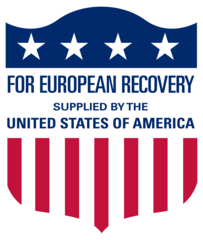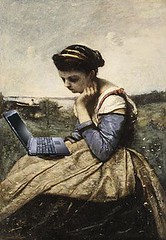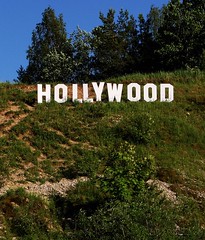| 6972194369 | What theme is "Demography and Disease" in? | Theme 1: Interactions Between Humans and the Environment |  | 0 |
| 6972194370 | What theme is "Migration" in? | Theme 1: Interactions Between Humans and the Environment |  | 1 |
| 6972195961 | What theme is "Patterns of Settlement" in? | Theme 1: Interactions Between Humans and the Environment |  | 2 |
| 6972195962 | What theme is "Technology" in? | Theme 1: Interactions Between Humans and the Environment |  | 3 |
| 6972195963 | What theme is "Religions" in? | Theme 2: Development and Interaction of Cultures |  | 4 |
| 6972195964 | What theme is "Belief Systems, Philosophies, and ideologies" in? | Theme 2: Development and Interaction of Cultures |  | 5 |
| 6972195965 | What theme is "Science and Technology" in? | Theme 2: Development and Interaction of Cultures |  | 6 |
| 6972196729 | What theme is "The Arts and Architecture" in? | Theme 2: Development and Interaction of Cultures |  | 7 |
| 6972196730 | What theme is "Political Structures and Forms of Governance" in? | Theme 3: State-Building, Expansion, and Conflict |  | 8 |
| 6972196731 | What theme is "Empires" in? | Theme 3: State-Building, Expansion, and Conflict |  | 9 |
| 6972196732 | What theme is "Nations and Nationalism" in? | Theme 3: State-Building, Expansion, and Conflict |  | 10 |
| 6972196733 | What theme is "Revolts and Revolutions" in? | Theme 3: State-Building, Expansion, and Conflict |  | 11 |
| 6972196734 | What theme is "Regional, Transregional, and Global Structures and Organization" in? | Theme 3: State-Building, Expansion, and Conflict |  | 12 |
| 6972197763 | What theme is "Agricultural and Pastoral Production" in? | Theme 4: Creation, Expansion, and Interaction of Economic Systems |  | 13 |
| 6972197764 | What theme is "Trade and Commerce" in? | Theme 4: Creation, Expansion, and Interaction of Economic Systems |  | 14 |
| 6972283062 | What theme is "Labor Systems" in? | Theme 4: Creation, Expansion, and Interaction of Economic Systems |  | 15 |
| 6972283112 | What theme is "Capitalism and Socialism" in? | Theme 4: Creation, Expansion, and Interaction of Economic Systems |  | 16 |
| 6972405504 | What theme is "Industrialization" in? | Theme 4: Creation, Expansion, and Interaction of Economic Systems |  | 17 |
| 6972284108 | What theme is "Gender Roles and Relations" in? | Theme 5: Development and Transformation of Social Structures |  | 18 |
| 6972284109 | What theme is "Family and Kinship" in? | Theme 5: Development and Transformation of Social Structures |  | 19 |
| 6972287310 | What theme is "Racial and Ethnic Constructions" in? | Theme 5: Development and Transformation of Social Structures |  | 20 |
| 6972308363 | What theme is "Social and Economic Classes" in? | Theme 5: Development and Transformation of Social Structures |  | 21 |
| 6972339881 | What are the themes in "Theme 1: Interactions Between Humans and the Environment"? | -Demography and Disease
-Migration
-Patterns of Settlement
-Technology |  | 22 |
| 6972350992 | What are the themes in "Theme 2: Development and Interaction of Cultures"? | -Religions
-Belief systems, Ideology, and Philosophies
-Science and Technology
-The Arts and Architecture |  | 23 |
| 6972350993 | What are the themes in "Theme 3: State-Building, Expansion, and Conflict"? | -Regional, Transregional, and Global Structures and Organization
-Revolts and Revolution
-Nations and Nationalism
-Empires
-Political Structures and Forms of Governance |  | 24 |
| 6972351988 | What are the themes in "Theme 4: Creation, Expansion, and Interaction of Economic Systems"? | -Capitalism and Socialism
-Labor Systems
-Industrialization
-Trade and Commerce
-Agricultural and Pastoral Production |  | 25 |
| 6972324566 | What are the themes in "Theme 5: Development and Transformation of Social Structures"? | -Social and Economic Classes
-Racial and Ethnic Constructions
-Family and Kinship
-Gender Roles and Relations |  | 26 |
| 6972455630 | What is the name of "Period 1" and when was it? | -"Technological and Environmental Transformations"
-to c. 600 B.C.E. | | 27 |
| 6972484423 | What is the name of "Period 2" and when was it? | -"Organization and Reorganization of Human Societies"
-c. 600 B.C.E. to c. 600 C.E. | | 28 |
| 6972510013 | What is the name of "Period 3" and when was it? | -"Regional and Transregional Interactions"
-c. 600 C.E. to to c. 1450 | | 29 |
| 6972528657 | What is the name of "Period 4" and when was it? | -"Global Interactions"
-c. 1450 to c. 1750 | | 30 |
| 6972538153 | What is the name of "Period 5" and when was it? | -"Industrialization and Global Integration"
-c. 1750 to c. 1900 | | 31 |
| 6972547772 | What is the name of "Period 6" and when was it? | -"Accelerating Global Change and Realignment"
-c. 1900 to the Present | | 32 |
| 6972563249 | What key concepts are in "Period 1: Technological and Environmental Transformations"? | -Big Geography and the Peopling of Earth
-The Neolithic Revolution and Early Agricultural Societies
-The Development of Early Agricultural, Pastoral Urban Socities | | 33 |
| 6972585131 | What key concepts are in "Period 2: Organization and Reorganization of Human Societies"? | -The Development and Codification of Religious and Cultural Traditions
-The Development of States and Empires
-Emergence of Transregional Networks of Communications and Exchange | | 34 |
| 6972586648 | What key concepts are in "Period 3: Regional and Transregional Interactions"? | -Expansion and Intensification of Communication and Exchange Networks
-Continuity and Innovation of State Forms and Their Interactions
-Increased Economic Productivity Capacity and Its Consequencences | | 35 |
| 6972586649 | What key concepts are in "Period 4: Global Interactions"? | -Globalizing Networks of Communication and Exchange
-New Forms of Social Organization and Modes of Production
-State Consolidation and Imperial Expansion | | 36 |
| 6972587968 | What key concepts are in "Period 5: Industrialization and Global Integration"? | -Industrialization and Global Capitalism
-Imperialism and Nation-State Formation
-Nationalism, Revolution, and Reform
-Global Migration | | 37 |
| 6972587969 | What key concepts are in "Period 6: Accelerating Global Change and Realignment"? | -Science and the Environment
-Global Conflicts and Their Consequences
-New Conceptualizations of Global Economy, Society, and Culture | | 38 |
| 6973111070 | What Historical Thinking skills must you have? | -Analyzing Evidence: Content and Sourcing (Primary Sources)
-Interpretation (Secondary Sources)
-Comparison
-Contextualization
-Synthesis
-Causation
-Patterns of Continuity and Changed Over Time
-Periodization
-Argumentation | | 39 |












































































